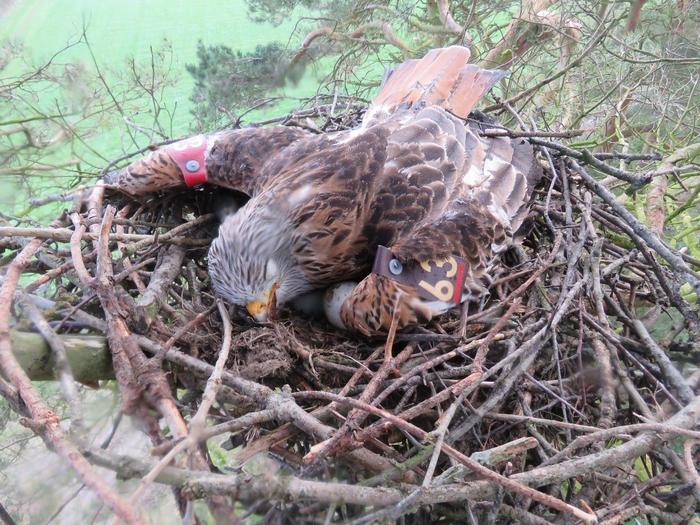A comprehensive study published in the Journal of Raptor Research reveals troubling findings about the poisoning of raptors across Europe from 1996 to 2016. The paper, titled “Poisoning in Europe Between 1996 and 2016: A Continental Assessment of the Most Affected Species and the Most Used Poisons,” underlines the significant threat posed by illegal poisoning to these vital birds of prey. Lead author Ralph Buij, alongside a dedicated team of 32 coauthors, meticulously compiled and analyzed retrospective data on poisoning incidents spanning 22 European countries, showcasing a harrowing trend detrimental to raptor populations.
This extensive investigation highlights that between the years studied, a staggering total of 3,196 poisoning events involving 37 different raptor species were recorded. Among these, several species classified as Threatened by the International Union for the Conservation of Nature have suffered greatly. The Saker Falcon, along with four Vulnerable and three Near Threatened species, were notably among the casualties. The results indicate that not only are Europe’s raptors facing immense challenges from habitat loss, but illegal poisoning exacerbates their plight, highlighting a dual crisis threatening biodiversity.
Carbofuran, a highly toxic pesticide banned in the European Union, emerged as the most frequently detected poison in the recorded events. Aldicarb, parathion, and alpha-chloralose were also prevalent in the findings. Alarmingly, more than half of the reported poisoning incidents associated with carbofuran and aldicarb occurred post-ban, indicating a persistent and pervasive issue with illegal application across the continent. This reveals not only an urgent need for more robust enforcement mechanisms but also the necessity for increased public awareness about the dangers posed by these toxic substances.
Raptors play a crucial role in maintaining ecological balance as apex predators. Their dietary preferences often lead them to scavenging, which makes them particularly vulnerable to ingestion of poisoned bait intended for other species. Such practices illustrate a dangerous intersection of agricultural interests and wildlife conservation issues that need to be addressed through collaborative efforts. Evidently, these deliberate acts of poisoning not only harm individual birds but also disrupt entire ecosystems by diminishing the population of these important scavengers.
For much of the study period, researchers observed temporal patterns in poisoning incidents, finding a critical peak during the early spring months. This seasonality correlates with increased agricultural activities and hunting practices, which coincidentally overlaps with the breeding season of many raptor species. As raptors have long life spans and nurture a limited number of young, the loss of breeding adults can have disastrous repercussions on population sustainability. Every death during this critical reproductive phase poses a significant risk to the long-term viability of raptor populations.
The data encapsulated in the study presented by Buij and his team is sobering, but it also serves as a call to action for policymakers, conservationists, and the public. Their insightful conclusions suggest that implementing effective strategies and educational programs may bear promising results in combatting illegal poisoning. Countries such as Spain, which have developed specialized canine units to detect poisons and invested in training law enforcement, can serve as models for successful interventions. Enhancing communication about the ecological importance of raptors and establishing community-centric conservation efforts could cultivate a cooperative spirit among stakeholders.
In their discussions, coauthor Ngaio Richards echoes concerns over the alarming trends unveiled by the research and emphasizes the necessity of investing resources into addressing illegal poisoning practices. Identifying key participants in these illegal activities and transforming them into allies may yield more enduring solutions than punitive measures alone. Building trust and community support can effectively reduce threats to raptor populations as awareness campaigns highlight the importance of maintaining healthy ecosystems.
Another critical aspect of the authors’ recommendations is the advocacy for continued research focused on common raptor species. By shining a light on the plight of species like the Eurasian Buzzard, which stands as a sentinel for broader ecosystem health, researchers hope to galvanize support and funding for initiatives dedicated to these frequently overlooked birds. Raptors provide an array of essential ecosystem services, including pest regulation and waste removal, services that often go unrecognized yet are indispensable for maintaining balanced environments.
Given the integral role that raptors play in their ecosystems, a standardized monitoring approach for recording incidents of poisoning across Europe is paramount. This would ensure that the conservation efforts target not just endangered raptors but encompass all species at risk due to illegal poisoning. The authors underscore the pressing need for coalition-building among scientists, conservationists, and policymakers to ensure that the environmental hazards posed by illegal toxins are addressed effectively.
As this study pushes the urgent conversation around raptor conservation to the forefront, it serves as a powerful reminder that continued advocacy, research, and policy action are essential for safeguarding Europe’s raptor populations. The intersection of agriculture, wildlife conservation, and community action presents both challenges and opportunities in mitigating poisoning incidents. Grounded in a spirit of collaboration, future initiatives could lay the groundwork for healthier ecosystems and thriving raptor populations across the continent, thereby ensuring that these magnificent birds of prey persist for generations to come.
In conclusion, the findings presented in this comprehensive assessment not only spotlight the dire state of raptor populations across Europe but also provide a framework for future conservation efforts. The hope remains that by mobilizing resources and embracing innovative solutions, we can change the trajectory for these crucial species and foster a more harmonious relationship between agriculture and wildlife conservation.
Subject of Research: Animals
Article Title: Raptor Poisoning in Europe Between 1996 and 2016: A Continental Assessment of the Most Affected Species and the Most Used Poisons
News Publication Date: 21-Feb-2025
Web References: 10.3356/jrr2373
References: Buij et al. (2025). Raptor Poisoning in Europe Between 1996 and 2016: A Continental Assessment of the Most Affected Species and the Most Used Poisons. Journal of Raptor Research, 59(2): 1-19.
Image Credits: Alan Ferguson.
Keywords: Raptor poisoning, ecological health, illegal pesticides, conservation, biodiversity, wildlife protection, Europe, raptor populations.




